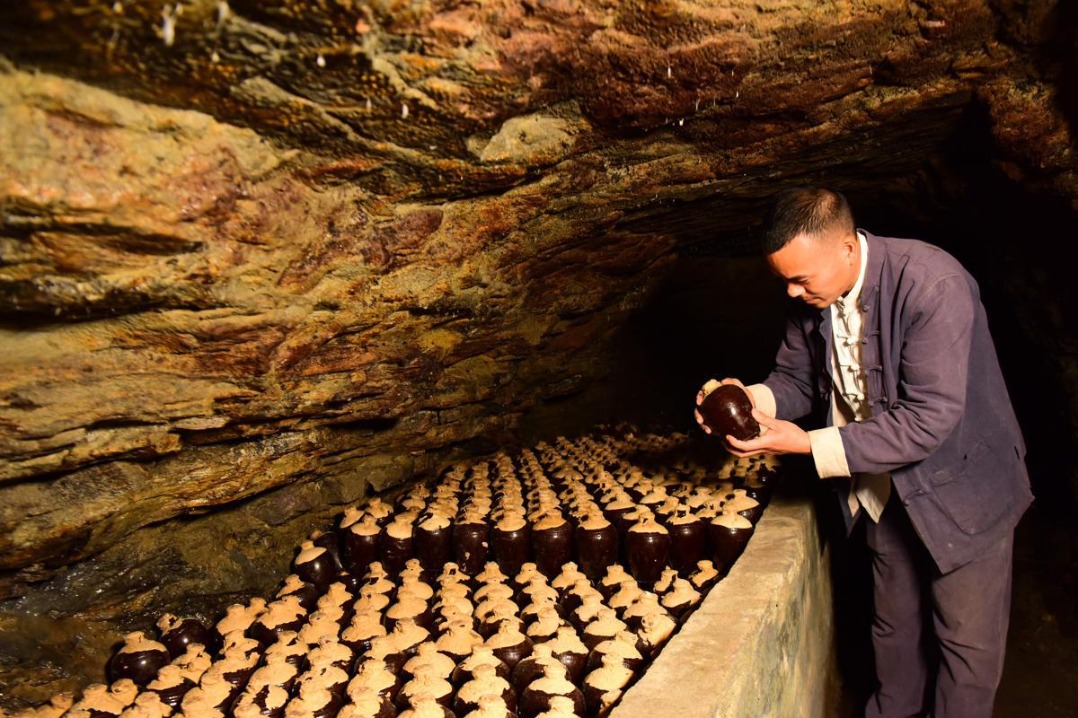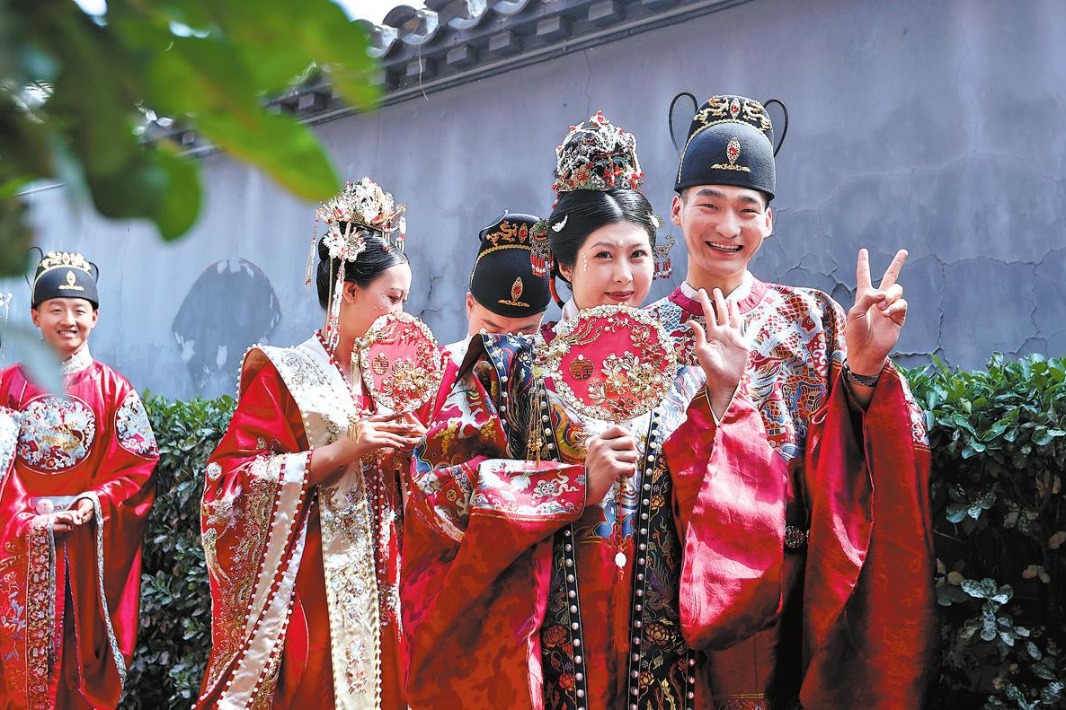Building a greener future

Sprawling out on the periphery of Shanghai's Hongqiao airport and railway station looms a vast structure resembling a gigantic lotus leaf from above. This megastructure, the National Exhibition and Convention Center, is one of the world's largest single-block buildings, spanning 1.55 million square meters. The truly remarkable thing about this building is that no carbon emissions are produced in its operation during the China International Import Expo.
The NECC is the annual home for the CIIE, an event that attracts numerous exhibitors, buyers and exhibitors from across the country and around the world.
From 2021, all the booths and displays, all the electricity used to power the lights and all the coaches used to ferry people back and forth had no carbon footprint. The material in the booths came from sustainable sources. The electricity came from wind and solar. The coaches were electric.
Collectively, the sustainable practices implemented by the NECC result in a reduction of 46,800 metric tons of carbon dioxide emissions each year, according to the building's management company.
The Shanghai Hongqiao International Central Business District, where the NECC is located, has spearheaded a volley of low-carbon initiatives since the district was established in 2010.
Fifteen years on and Hongqiao CBD is a global front-runner in terms of urban city planning, sustainable development, low-carbon construction, design and operations.
At its inception, the administrative committee behind Hongqiao CBD set the goal for the district to produce 45 percent less carbon emissions than other districts in Shanghai produced in 2005. By 2017, Hongqiao CBD's carbon footprint was 58 percent less than the level of other Shanghai districts in 2010.
"Integrating advanced development concepts and aiming to be a model for future cities, the district has adopted a range of green technologies and approaches, including mixed use of business formats, a multi-layered pedestrian system, 100 percent green building design compliance, and extensive rooftop greenery," said Kong Fu'an, Party secretary and executive deputy director of the Shanghai Hongqiao International Central Business District Administrative Committee.
"Such practices embodying green and ecological principles are carried out throughout the planning, construction and management life cycle, ensuring sustainable development," he said.
Hongqiao CBD, situated on the western side of the center of Shanghai, has grown into a pivotal transport hub for the Asia-Pacific region, a key node in the national unified market, a catalyst for the integrated development of the Yangtze River Delta region, and a driving force for Shanghai's continued growth, Kong said.
In 2023, Hongqiao CBD set targets to achieve a forest coverage rate of 23 percent and to construct 180 kilometers of greenways by 2035.Xu Mingsheng, head of construction for Hongqiao CBD, said sustainability is at the heart of every project. "The district's green and low-carbon efforts rank among the best internationally, and even outperform many counterparts in the West," he said.
Connected walkways
With an emphasis on green transportation, a key element of Hongqiao CBD's urban planning centered on making the district accessible by foot. As a result, an integrated and multi-layered pedestrian network has been built that seamlessly connects skywalks, ground-level walkways and underground pathways.
The transportation plan for the district prioritizes pedestrians and slow traffic, and features a high-density road network and small-scale neighborhoods, creating a pedestrian-friendly environment, according to Xu.
So far, Hongqiao CBD has 24 underground pathways and 13 skywalks within the core CBD area, and so people can easily access any of the buildings and metro stations, he said.
Luan Yinghui, who works in the CBD, said the underground passageways make getting around on foot a breeze.
"They are designed to offer the shortest routes between blocks, eliminating the need for detours and waiting at traffic lights. I always prefer taking the underground pathways when I need to go to the railway station or the airport for business travel," she said.
Xu said the underground passages attract a significant number of pedestrians, especially during summer and winter, as they provide a more comfortable temperature.
"I often hear people say that the skywalks offer a refreshing experience with changing scenery, making long walks feel less tiring and more enjoyable," she said.
Xu said that teams from Singapore, China's Hong Kong and Taiwan, and numerous domestic groups have visited Hongqiao CBD to learn from its approach to pedestrian-friendly buildings. Local Shanghai areas have also drawn inspiration, incorporating new skywalks and underground passages, with recent facelifts in Xujiahui featuring enhanced pedestrian connectivity.
Centralized energy supply
The district's commitment to sustainability extends to its centralized energy supply for building clusters, a pioneering initiative in low-carbon practices.
"Hongqiao CBD was the first place in the country to supply cooling, heating and electricity in an integrated way across an entire district," said Party secretary Kong.
Fueled by natural gas, the project adopts a combined cooling, heating and power supply system, utilizing waste heat generated during power generation for cooling and heating purposes, maximizing natural gas efficiency and enhancing overall energy utilization.
"The integrated energy utilization efficiency of the district's system exceeds 80 percent, reducing carbon dioxide emissions by 36 percent compared with traditional energy supply methods, and resulting in an annual reduction of over 30,000 tons of carbon dioxide emissions in the CBD core area," Kong said.
Green buildings
In the core area of Hongqiao CBD, every building has been built in 100 percent compliance with green building design principles. Projects on 13 plots totaling 2.12 million sq m have received dual certifications from LEED and China's Green Building Label, according to the CBD administrative committee.
Yun Yanchun, chief engineer of the Shanghai branch of Baoye Group, one of the CBD's building developers, said their green and low-carbon buildings were realized through passive, active and renewable energy approaches.
"Passive measures included using energy-efficient materials on building facades to enhance insulation. The windows were also designed for optimal insulation, reducing energy demand. Active measures focused on reducing energy demand through designing particular building forms, recovering heat from ventilation and constructing sunken courtyards," he said.
"For example, there is a building we built in the shape of a megaphone. The design of the building allows it to collect wind from the southeast, channeling it into each atrium, maintaining temperatures there 1 to 2 C lower than outside," said Yun.
Photovoltaic panels have been used on rooftops and facades on many of the buildings, harnessing solar energy to generate electricity. The excess energy is stored for use during cloudy or nighttime conditions, Yun said.
"Through these pathways we're basically getting to carbon neutrality for the entire building," he said.
Developers emphasized that while green construction may cost more initially, it garners recognition and appreciation from many enterprises that want to secure a place in the CBD. Some businesses, especially multinational corporations and listed companies, prioritize green and low-carbon principles, preferring eco-friendly office spaces as part of their environmental, social and governance philosophies, they said.
"Based on incomplete statistics, upgrading a building to achieve China's Three-star Green Building Label or LEED certification incurs additional costs, but energy savings over the next 10 to 15 years offset these expenses," said Yun.
"Quality buildings boast longer life spans, significantly reducing carbon emissions. The entire life cycle of a building, from construction to operation and eventual decommissioning, must be considered for investment and returns," he said.
- Building a greener future
- Civil aviation expo tracks China's fast but safe flight trajectory
- State Council oversees deadly Shandong chemical blast probe
- COVID-19 spread subsiding across China: NDCPA
- Shanghai fashion brands and products attract Japanese designers, and consumers
- China Eastern Airlines celebrates second anniversary of jetliner C919





































